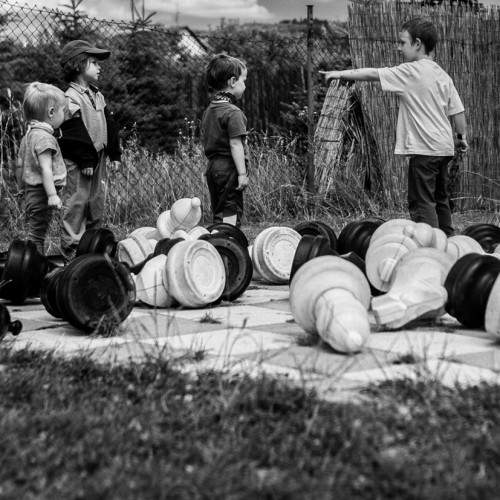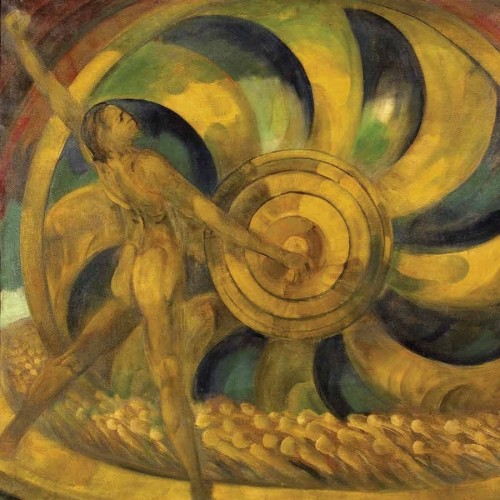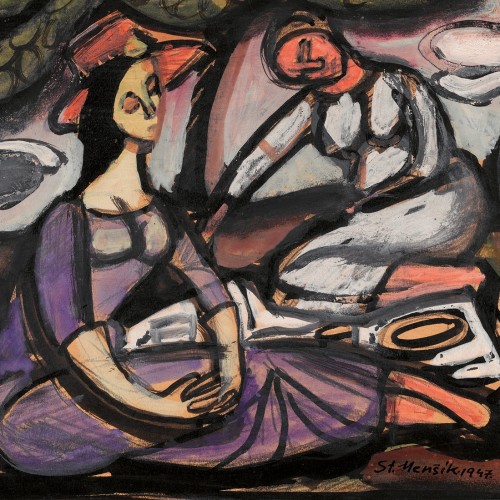The CEAD Interactive Map tells how artists and their exhibitions are linked
Press release | July 31, 2018
Official and unofficial culture of the second half of the 20th century and its main milestones
CEAD│Central European Art Database│www.cead.space
(Phase III of the Project │25 Sep 2017 – 31 Aug 2018
with the support of the International Visegrad Fund, Standard Grant
Partners: Zachęta Narodowa Galeria Sztuki, Warsaw (PL), Ludwig Múzeum – Kortárs Művészeti Múzeum, Budapest (HU), East Slovak Gallery in Košice (SK).
The third consecutive phase of the Central European Art Database (CEAD) project with the title Official and unofficial culture of the second half of the 20th century and its main milestones (25 Sep 2017 – 31 Aug 2018) focused on the visualisation of Central European art and on selected artists in terms of similarities, parallels and unknown links and differences between them. It aims to provide the collected data and information in the textual form as well as in a playful manner using various graphical depictions, schemas and diagrams which are capable of giving a much better description of fine arts in a given period and place than just an austere text. An interactive CEAD map was made to show such connections. It makes it possible for the user to arbitrarily select up to ten names of the artists included in the CEAD database which can then be seen on a timeline in individual years and places/cities they visited to perform their work or participate in exhibitions.
The map of Europe is displayed because most events and exhibitions take place in the western part of Euroasia. However, we are also going to provide information on exhibitions held outside the continental area displayed. By simply moving the mouse cursor over individual years on the vertical timeline the user can easily see an increasing or decreasing number of coloured dots on the map which indicate selected artists events and exhibitions held in specific places in Europe. By clicking on a selected dot in the colour of a given artist we can read more detailed information on where and when the given event/exhibition took place under the map. A list of other artists who also participated in the given exhibition and who are included in CEAD show up in colour grey under the name of the given artist. By clicking on the "+" button next to the artists name users can also change their original selection of artists; it means that users can add or delete certain names and continue their research in the complicated environment.cead.space.
Since CEAD aims to inform of the possibility of mutual meetings of artists when they were participating in the same joint exhibitions, the dots which represent such a collective event are in the form of targets consisting of the colours assigned to individual artists. Moreover, artists names in their respective colours are arranged one under another in a column and, therefore, provide clear information on when and where the artists could have met and, as the case may be, exhibited and confronted their own works.
In addition to the interactive map, other forms of graphical representation will also be published in the next term. They will provide a specific amount of data from the CEAD database in an original way. For example, they will focus on and compare the lives and works of specific artists, specific artistic topics, such as figurative versus non-figurative approach to art, and various forms of the media and techniques used. The graphs will also show a percentage share of the investigated topic within the general overview, sorted by individual consecutive decades, namely the development and relationships based on the existing data in the database as on a specific date.
By incorporating interactive features in the database, like the new CEAD map, the active role is shifted to the cead.space users who will choose the contents they want to research themselves. Emphasis is placed on the possibility of targeted searching in the database and on displaying the contents according to the users preference. Owing to the complexity of the technical solution, it is only possible to make gradual steps in the database structure and to develop it based on individual research periods and the subsequent processing. Therefore, the next phase of CEAD will see further evaluation of the results and present textual information and data which have already been included in the database and which have been gradually complemented and extended with regard to topical issues which are currently being monitored and which the Olomouc Museum of Art and the cooperating partner institutions deal with in their projects.
The selection of artists included in CEAD has also been extended by four new ones who represent the upcoming young generation and who have won recognition in the international art scene: Konrad Smoleński (PL), István Csákány (HU), Ján Zelinka (SK) and Eva Koťátková (CZ). Despite their age, they have already participated in prestigious contemporary-art exhibitions, such as biennale, triennale or solo exhibitions, in renowned galleries worldwide. Their inclusion in CEAD is also underlined by the fact that they are graduates of art studios which have been run by artists who have already been included in CEAD, who have worked as professors at Art Academies in individual V4 countries and who still play an important role in the art scene similarly like they did in the previous decades. For example István Csákány graduated from the Academy of Fine Arts in Budapest where he studied in Dóra Maurers studio. Ján Zelinka studied at the Faculty of Arts of the Technical University in Košice - Free Creativity Studio (3D), run by Juraj Bartusz. Eva Koťátková studied at the Academy of Fine Arts in Prague, in Vladimír Skrepls and Jiří Kovandas studio. Entries about the above artists were authored by experts who cooperated in the CEAD project along with the Olomouc Museum of Art and who came from its partner organisations: Ludwig Múzeum – Kortárs Művészeti Múzeum in Budapest (Krisztina Üveges), Zachęta Narodowa Galeria Sztuki in Warsaw (Maria Świerżewska) and East Slovak Gallery in Košice (Miroslav Kleban). In their accompanying texts, they could arbitrarily select specific names and prepare information about exhibitions or the nature of works. Since they suggested a great number of names, we are going to expand the number of artists in the database by the young and middle-age generation of artists who are active in both the local and international art scenes.














